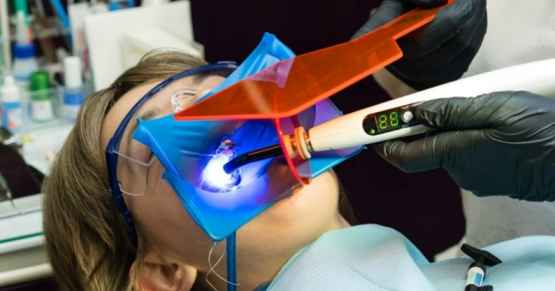
Table of Contents
In the field of dental restorations, the significance of high-quality components cannot be overstated. Dental restorations, which include crowns, bridges, and dentures, are crucial for restoring the function and aesthetics of a patient’s smile. The quality of the components used in these restorations directly impacts their longevity, functionality, and overall success. This article will explore why high-quality components are paramount in dental restorations, focusing on their role in patient satisfaction, clinical outcomes, and long-term cost efficiency.
Patient Satisfaction
Patient satisfaction is a primary goal in dental restorations. High-quality components contribute significantly to achieving this goal by ensuring the restorations are comfortable, aesthetically pleasing, and durable.
Comfort and Fit
One of the most critical aspects of dental restorations is their fit. Ill-fitting restorations can cause discomfort, lead to bite issues, and even cause damage to surrounding teeth and gums. High-quality components, such as precision-engineered dental analogs, are manufactured with tight tolerances to ensure a perfect fit. These components replicate the original dimensions and geometries of natural teeth, allowing for seamless integration with the patient’s oral anatomy. This precision minimizes the need for adjustments and reduces the risk of complications, leading to a more comfortable experience for the patient.
Aesthetic Appeal
The aesthetic appeal of dental restorations is crucial for patient satisfaction. High-quality components closely mimic the natural appearance of teeth and can be color-matched to the patient’s existing teeth, ensuring a natural-looking smile. Advanced manufacturing techniques create components with detailed textures and translucency, enhancing aesthetics. Satisfied patients are more likely to adhere to follow-up care and maintain good oral hygiene, contributing to the long-term success of the treatment.
Clinical Outcomes
The clinical outcomes of dental restorations are heavily influenced by the quality of the components used. High-quality components can lead to more predictable and reliable results, reducing the likelihood of complications and the need for re-treatments.
Durability and Longevity
The durability and longevity of dental restorations depend on the quality of materials and manufacturing processes. High-quality materials, like titanium grade 5, offer superior strength and resistance to wear and corrosion, enduring the forces of biting and chewing for years. Advanced manufacturing techniques, such as CNC machining with dynamic tool correction, ensure components meet stringent tolerances and maintain integrity over time. Durable restorations reduce the need for replacements and repairs, providing better long-term outcomes for patients.
Biocompatibility
Biocompatibility is a crucial consideration in dental restorations. Components that are not biocompatible can cause adverse reactions, such as inflammation, infection, and allergic responses. High-quality components are typically made from biocompatible materials that are safe for use in the human body. These materials are tested rigorously to ensure they do not elicit harmful reactions and can integrate well with the surrounding tissues. The use of biocompatible components minimizes the risk of post-operative complications and promotes faster healing, leading to improved clinical outcomes.
Long-Term Cost Efficiency
Investing in high-quality components for dental restorations can lead to significant cost savings in the long term. Although high-quality components may have a higher initial cost, their benefits far outweigh the expense when considering the overall lifecycle of the restoration.
Reduced Need for Replacements and Repairs
One of the most apparent cost benefits of high-quality components is the reduced need for replacements and repairs. Durable components are less likely to fail or wear out prematurely, meaning patients do not need to undergo additional procedures to replace or repair their restorations. This not only saves on the cost of materials and labor but also reduces the inconvenience and discomfort for the patient.
Improved Efficiency in Dental Practices
High-quality components can improve the efficiency of dental practices. Precision-engineered components are easier to work with and require fewer adjustments during the fitting process. This can reduce the time spent on each patient and allow dental professionals to see more patients within the same timeframe. Additionally, reliable components reduce the likelihood of post-operative issues, leading to fewer follow-up visits and less chair time dedicated to addressing complications. This efficiency can translate to cost savings for the dental practice and a more streamlined experience for patients.
The Role of Innovation and Technology
Innovation and technology play a crucial role in the development and manufacturing of high-quality components for dental restorations. Advances in materials science, manufacturing techniques, and digital dentistry have revolutionized the field, allowing for the creation of components that are more precise, durable, and biocompatible than ever before.
Advanced Materials
The development of advanced materials has been a game-changer in dental restorations. Materials such as zirconia, titanium grade 5, and high-strength ceramics offer superior properties compared to traditional materials. Zirconia, for example, is known for its excellent strength, durability, and aesthetic qualities, making it an ideal choice for dental crowns and bridges. Titanium grade 5, commonly used in dental screws and analogs, provides exceptional strength and biocompatibility, ensuring the longevity and safety of the restorations.
Precision Manufacturing
Precision manufacturing techniques, such as CNC machining and 3D printing, have significantly improved the quality of dental components. CNC machining allows for the production of components with tolerances as tight as ± 0.001 mm, ensuring an exact fit and reducing the need for adjustments. 3D printing, on the other hand, enables the creation of complex geometries that were previously impossible to achieve with traditional manufacturing methods. These technologies ensure that each component meets the highest standards of quality and performance.
Digital Dentistry
Digital dentistry has transformed the way dental restorations are designed and fabricated. The use of digital impressions, CAD/CAM technology, and computer-aided manufacturing allows for a more accurate and efficient workflow. Digital impressions eliminate the need for traditional molds, reducing discomfort for the patient and improving the accuracy of the final restoration. CAD/CAM technology enables dental professionals to design restorations with unparalleled precision, while computer-aided manufacturing ensures consistent quality in the production of components. The integration of digital technology in dental practices enhances the overall quality and success of dental restorations.
Conclusion
The importance of high-quality components in dental restorations is evident in their impact on patient satisfaction, clinical outcomes, and cost efficiency. By prioritizing high-quality materials and precision manufacturing, dental professionals can ensure restorations that provide comfort, durability, and aesthetic appeal. Advances in technology have further elevated the standards, making restorations more reliable and effective. Investing in high-quality components benefits patients and supports the success and efficiency of dental practices, contributing to the overall advancement of dental restorations.
You can also read our latest post.


